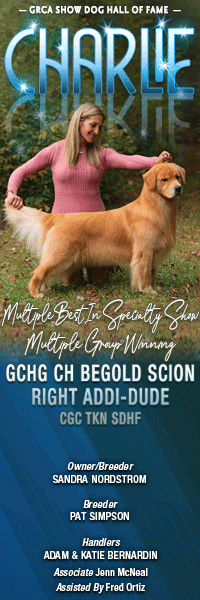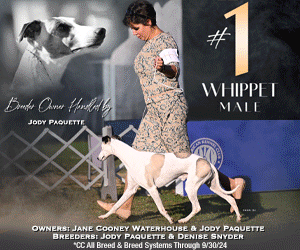Grumpy Cat
Click here to read the complete article
106 – September 2019
Cat videos…I index that stuff in the “Unfortunate Addiction” category, and don’t intend to explore the rest of it here. Anyway, whether or not you care, you were abundantly notified about the sad demise of Grumpy Cat on May 14, 2019. She (and this cat was a SHE), formally named Tardar Sauce, succumbed to complications from a urinary tract infection. I am obviously not a cat person- but this cat’s global media reach was phenomenal. News of her unexpected death rivaled obituary coverage of A-List celebrities, which I guess was the legitimate status of this cat. Back in 2014 her owner took umbrage with The Daily Express for its calculation of Grumpy Cat’s net worth, dubbing her “the richest cat in the world.” Maybe that $99 mil number was debatable, but no fuzzy math was needed to verify the scope of this cat’s cultural impact according to Twitter/Instagram numbers. Grumpy Cat’s debut on Reddit back in 2012 garnered one million hits in less than two days and it was smooth sailing from there. Book signings, personal appearances came with her fame, and by 2014 when British tabloids threw out that astronomical number the global market was saturated with Grumpy Cat images of every form.
Enough of that, though.
The whole thing is incontestable proof of the pervasive impact that can result from–let’s face facts–basically doing zilch aside from showing off some quirky visual appeal. I’d also venture a guess that 99 percent of us keep house with an equally weird and photogenic dog or two. All things considered, my one-track mind instantly zeroed in on the pertinent aspect of this story.
How in the hell has this sport gotten so off target? I mean it’s impossible to separate commercialized optics from competitive dog sports. And that applies to every single sport. Not only that, but purebred news happens non-stop. I’m not claiming that it’s all relevant, but in my experience it requires almost drastic measures like entering monastic life to detach from this endless drama. The point is that it is interesting, relatable stuff and I am probably not the first to notice that it’s potentially addictive. So the big question is how/when/where did the mainstream media decide that purebred dog stories are box office poison? Really, only negative, sensationalist “puppy mill” stuff earns actual journalistic treatment these days. And although Westminster still merits a token degree of national news coverage, please take note of the patronizing tone and content.
It’s a documented fact that not so long ago PUREBRED SHOW DOGS consistently qualified as valid national news exactly like this cat. You have every right to be skeptical about that so I devoted about five minutes to searching the New York Times archives for a few examples of the canine stories that once ranked as daily news.
On November 9, 1926 this iconic source of world events reported that Chinook, lead dog of Arthur Walden’s team, visited the children’s ward at Bellevue Hospital. The article went on to note Chinook’s illustrious heritage as the grandson of the dog that had led Admiral Robert Peary’s team to his successful quest of the North Pole in 1909.
A more distressing Times report from March 31, 1891 informed readers that the famed champion Saint Bernard ‘Alton’ had succumbed to pneumonia following a recent show, adding that he had cost $4500 “but was valued even more highly by his owner and had been America’s top winner until the recent arrival of the celebrated British import Sir Belvidere.” I really cannot imagine the Times covering something like that today, but they didn’t fail to report Grumpy Cat’s demise.
Another one from December 7, 1898 described the shocking death of the nation’s top winning Irish Setter, Ch. Dick Swiveler. This detailed article cited his owner, San Francisco native A.B Truman, saying that “as a bench show winner, the two-year-old dog was doubtless the most famous of this breed ever shown in this country having won first prize every time he was shown…the dog was found dead and examination revealed evidence of poisoning.” And this was way before Irish Setters really hit the pinnacle as an American obsession.
It wasn’t all bad news.
On May 12, 1912 the Times reported that Miss Jennie Crocker was selling her “blue ribbon kennels at Hillsborough.” Back then, the Crocker name was enough to sell papers. Two years earlier, thanks to fate, young Jennie became the sole heir to a multimillion dollar mining fortune. Reporters followed her every move, including every detail of her subsequent entry into this sport. She purchased the best Frenchies and Bostons that money could buy, and those were most definitely the hot breeds of that era. Her resultant show ring success received media accolades rather than social condemnation for investing in purebred dogs. You get the picture. “It is understood that the California heiress, who is shortly to be married to Malcolm Whitman the former tennis champion, will dispose of about thirty prize winning champion French Bulldogs and Boston Terriers by private sale…. Miss Crocker has been breeding them for about five years and now owns perhaps the greatest collection of these breeds in the country. Valued at approximately $35,000 there is however a question as to whether any of the dogs will be brought east or sold in California.” Note that the idea of owning 30 dogs likewise didn’t spark media ire.
Anyway, you get the idea. The thing is that purebred news items like this consistently appeared in the plenty of major papers and they were not buried at the bottom of the sports page. As far as general content, it’s not so different from news items that still permeate our sport today. Interesting, but not earth shattering, but then again, what’s so fascinating about Grumpy Cat?
If you wanna get into the nitty gritty, I can say two things:
The overriding media condemnation of show dogs hinges on the misguided belief that they are useless layabouts, capable of nothing aside from looking good. I’m not going to waste time contradicting that ridiculous accusation here; I’m just saying I think that pretty accurately sums up the entire social contribution of Grumpy Cat.
Equaling that omnipresent media toxin is the truly insulting belief that shows dogs are inherently defective. Among other things, this sport’s dedication to health and genetic soundness is hard to top. Take a look at the number of human research studies that extrapolate crucial findings from stuff discovered thanks to PUREBRED dog recordkeeping. That’s because major medical research trusts the soundness of our basic practices. Why doesn’t that contribution get any airplay?
Not to put too fine a point on this but, despite the finest veterinary care money can buy, Grumpy Cat died at age seven…far from a healthy lifespan for cats or dogs. But oddly there was no judgment attached to this -or the fact that her signature look, her entire claim to fame, was based on a fairly routine hereditary defect. Dog people can spend an entire night debating the intricacies of dentition (been there, done that) but what I’m trying to say is that this idea that Grumpy Cat was something truly singular and special loses traction when you consider the big picture.
I realize that we are digging ourselves out of a major public relations hole, but there are ways to return purebred dogs to their former magnificent, well-deserved status. Spectator attendance at Westminster is right back to the glory days. And crowd response certainly indicates that pleasing the general public on that green carpet is a breeze compared to say, marching into a perfect stack.
The problem is that this adoration never goes beyond that moment. Behind the scenes stuff at shows attempts to achieve the sweet spot of relatable public interest, but it is obviously not getting the job done. We need to hone a decent takeaway message to get beyond those guaranteed moments of mass attention.
So who’s in charge of that project?
Click here to read the complete article
106 – September 2019
Short URL: https://caninechronicle.com/?p=172371
Comments are closed












